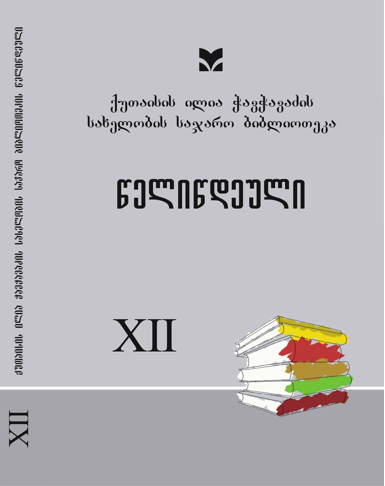From the History Of the Maradidi Community
DOI:
https://doi.org/10.48614/yk.12.2020.108-118Keywords:
Upper and Lower Maradidi, Ottoman Empire, Cultural and Educational Work, State BoundariesAbstract
The research introduces the history of the Maradidi community based on reviewing historical sources, archeological material, and the data, collected from the field expedition.
Maradidi community is situated on the right bank of the river Chorokhi. It was the part of the historic Nigali / Ligan Gorge, which together with ShavshetImerkhevi, with its favorable geographical location, made a significant contribution to the political, socio-economic, and cultural life of southwestern Georgia, in particular the Chorokhi Basin. The locals have lived in this area since ancient times. The peculiarities of the community were conditioned by natural geographical conditions. The shortest overland and Chorokhi river routes passed here, connecting the Black Sea sides of the historical Shavshet-Tao-Klarjeti in antiquity and earlier period.
The community of Maradidi has been quite advanced due to its favorable geographical location and natural conditions. Farming, cattle breeding, viticulture, winemaking, beekeeping, handicrafts-domestic industry (shipbuilding, until recently there is a tradition of making cradles) and others fields were developed here.
The community of Maradidi first was the part of the Kingdom of Kolkheti, then of Kartli, and later of the Samtskhe-Saatabago declared as Khasinju. It was difficult to fight against the Ottoman domination and the ongoing processes of resettling after the liberation, as a result of which the population of the main villages of the community migrated to the Ottoman Empire. The process of resettling (Muhajir) continued even after the First World War.
After the Ottoman rule, the local population showed great interest in cultural and educational activities. This was since, despite the Ottoman regime, the Georgian spoken language still showed its vitality; the population mainly maintained Georgian traditions, customs, the main thing is the native Georgian language. The first Georgian school was opened here in 1886, although its existence did not last long.
For the villages of the Maradidi community, as well as for other parts of southwestern Georgia, the political consequences of the 1921 Treaty of Kars, according to which the Georgian-Turkish state border crossed the village of Maradidi, were severe. Kveda (downward) Maradidi remained within the borders of Georgia and with the current administrative division is united in Khelvachauri municipality of the Autonomous Republic of Adjara as a community of Kirnati. Upper Maradidi was handed over to the Turkish state and today is part of the BorchkhaIlche (district) of Artvin Province.
In 1925, following, the changes made in Turkey, Zeda (Upper) Maradidi was renamed Muratli in Turkish. The spoken language of the Georgian population here is mainly the Georgian language. The ancient legends told by their ancestors about Batumi, Georgia, their origin are still alive in the memory of the villagers. Many of them still remember Georgian surnames, names of villages, and places.
Thus, the community of Maradidi was an ancient Georgian settlement, which played a significant part in the socio-economic and political life of the Chorokhi basin.



